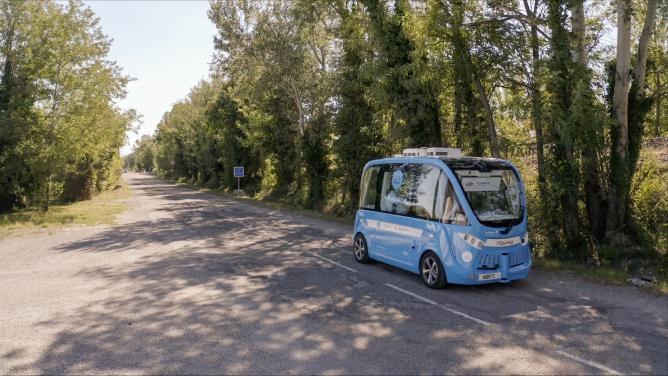
Will road infrastructures need to evolve to cope with the rapid increase in autonomous vehicles? Or, in a reverse logic, did the rise of this self-driving trend derive from new road innovations? Just like the chicken or the egg paradox, the car or the road paradox is looking to be a serious issue for the future – and not just one specific to driverless cars: dedicated lanes (or at least priority lanes) have been around for years as a way to favor one mode of transport or another, whether it is for electric vehicles (recently envisaged in France) or car-pooling (the famous “high-occupancy lanes” or even “carpool lanes” and their French equivalents).
The first 100 kilometers of the driverless car era?
When it comes to road infrastructure designed for the autonomous mobility era, developments oscillate between small steps and giant futuristic leaps. In any case, this era is bound to accelerate considering that there are more and more noticeable advantages to this mode of transport. In 2017, in France, a driverless car demonstrated it could easily get through a highway toll booth unaided, meanwhile two students from the University of Berkeley won the Infrastructure Vision 2050 design challenge with their futuristic “hyperlane” concept. Their “highway platform” the size of four interstate lanes would run parallel to the highway and be reserved uniquely for driverless cars. This concept was inspired by the Shinkansen high-speed rail network in Japan, and fuels the dream of driver-free cars zipping past other highway users and lorries at high speeds, without the slightest obstacle or traffic jam. Despite these two brains behind the concept and others championing special lanes, all that’s missing is funding…
However, such funding exists in China. Authorities have helped finance a new section of freeway in which two of the new eight lanes (one in each direction) will be specifically designed for autonomous vehicles. This section will be ready around 2020, and will link Beijing to the new city of Xiongan, inside what is the biggest urbanized megalopolis region in Northern China. The speed limit on the 100-kilometer section of freeway will range from 100 to 120 km/h and, according to the developer, it will include intelligent road infrastructure and smart-toll facilities. The connected infrastructure is designed to “acquire vehicle data and road information” and must improve traffic flow and safety while enabling drivers to reach Xiongan faster.
China, US, Canada and …. France?
Xiongan looks a bit like a neo-megacity conceived by design around autonomous cars. This makes room for experimentation, but also “eliminates the problems associated with adapting existing infrastructure to cope with a mix of human-operated and autonomous vehicles and pedestrians.”
While this project appears to be the most advanced in the world and even the only one currently being built, it certainly isn’t the only one in the pipeline. In Canada, a local political candidate has promised to open special lanes between Calgary and Edmonton, offering opportunities for research and for the real applications of automated vehicles. In the United States, there are many varied trials taking place. A rare (or even the only) example of an all-weather testing route can be found in Wisconsin. In this state north of Chicago, they were recently planning the possibility of building lanes dedicated to driverless cars on the famous Interstate 94, a highway built in the 1950s and covering more than 2,500 kilometers. However, this would mean restructuring the emergency lane, which would in fact become a lane for self-driving trucks. It would link to the factory that Foxconn plans to build in the Milwaukee region for manufacturing high-resolution flat screens, perhaps signaling future platooning plans.
In France, when it comes to the rollout of autonomous vehicles, testing is focused on the road. In any case, that’s what a recent testing program launched by the government suggests, following its call for projects titled “Expérimentation du Véhicule Routier Autonome” (EVRA, or “autonomous road vehicles testing” in English). It features, for example, the idea of using road lanes for autonomous vehicles: from 2019 to 2022, a seven kilometer stretch of former disused railway lines in the area around Nantes will be dedicated for testing an autonomous collective transport service. Is this the first of many to come?


